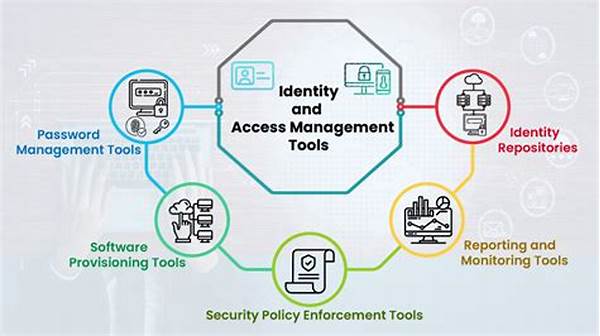Identity and Access Management Protocols
In today’s digital world, the mantra “safety first” extends far beyond physical boundaries. Cybersecurity has become the protagonist in the grand tale of technology, protecting sensitive information from ill-intentioned virtuosos who seek power through data. At the forefront of this intricate dance are Identity and Access Management Protocols (IAM), the unsung heroes ensuring that the right people access the right resources at the right times for the right reasons. Let’s embark on a journey to dissect the intriguing world of IAM protocols, serving up a feast of insights, served with a side of humor and intrigue.
Picture this: you’re at an exclusive club, the kind with velvet ropes and a discerning bouncer named IAM. If your name’s not on the list, it’s simply not your party. That’s how identity and access management protocols roll, acting as digital gatekeepers to protect the assets we hold dear. In the heart of IAM protocols lies a tantalizing interplay of authentication and authorization, safeguarding against cyber mischief and mayhem.
The splendor of IAM protocols is not just in the lock and key but in the intelligence woven into the very fabric of our interconnected digital tapestry. As you journey deeper, prepare to be captivated by stories of evolution, revolution, and the genius ways IAM keeps organizations dancing to the beat of cybersecurity’s drum.
Understanding the Core of IAM Protocols
IAM protocols break down complex security challenges into manageable, digital symphonies. They leverage well-designed frameworks to tailor security solutions that align with distinctive business objectives, propelling organizations into realms of security excellence. Functioning as more than just mere components of a security strategy, they serve as benchmarks for digital trust—turning chaotic, unauthorized access attempts into harmonious transactions of verified identities.
Each protocol is meticulously designed, encapsulating layers of security through tools like biometrics, encryption, and tokenization. The result? A flawless performance in digital security, where every move is carefully choreographed to ensure seamless interactions and trust.
—Discussing the Evolution of IAM Protocols
As we delve into the roots and fruits of identity and access management protocols, we notice a pervasive theme: evolution. From the static passwords of yesteryears to today’s dynamic multi-factor authentication landscapes, protocols have consistently refined, redesigned, and reinforced themselves. They have ridden the waves of technological advancements, sometimes outpacing change, other times adapting for survivability against new threats.
But why should you care about these evolutions? With the charm of a seasoned storyteller, we weave a saga where IAM protocols evolved from mere gatekeepers to becoming vital puzzle pieces in crafting a secure digital ecosystem. Every new chapter penned in the world of IAM speaks volumes about their unwavering commitment to innovation, ensuring your digital safety is never negotiable.
In an age where cyber threats morph with a keystroke, the evolution of IAM protocols is not just a tale of techno-wizardry but rather an embodiment of resilience and forward-thinking ingenuity. They promise more than just security; they deliver peace of mind, acting as the linchpins in today’s digital society, increasingly defined by its demand for both integrity and innovation.
IAM Protocols and Their Significance in Businesses
Identity and access management protocols are the VIPs in the hierarchy of business operations. These formidable protocols are woven deeply into the business fabric, ensuring operational integrity by orchestrating the trusted engagements between users and the digital corridors. IAM protocols nuance access, control, and diversification—providing businesses with exactly the leverage they need to keep the competitive edge razor sharp.
Through IAM, businesses can anticipate operational challenges before they crystallize into existential threats. Their significance is not an abstraction; it’s a reality. They embolden businesses to innovate securely, to pivot with precision, and to grow sustainably, all while ensuring that the risks of digital missteps are minimized, if not entirely eliminated.
The Future Directions of IAM Protocols
The future of identity and access management protocols promises another renaissance. Innovations are bubbling beneath the surface, poised to redefine how businesses perceive security. The inclusion of machine learning and artificial intelligence within IAM environments heralds an era where predictive security isn’t just plausible; it’s actionable.
IAM protocols will likely bridge gaps not only in technology but in trust, fostering an interconnected world built upon mutual assurance and streamlined efficiencies. They are no longer just the numerical passwords or the fingerprint scans—they are transforming into intuitive frameworks that know you perhaps better than you know yourself. Anticipate a shift that’s less about spectacle and more about substance, where IAM protocols become the conduits of progress, collaboration, and untapped possibilities.
Best Practices for IAM Protocols
Ensure top-level support for successful IAM implementation.
Periodic audits to assess and reinforce security postures.
Enhance security layers for trustworthy authentication.
Forensic audibility and increased threat detection.
Streamline authentication processes for users.
Govern access based on real-time analytics.
Efficient and scalable user access management.
Keep users informed on the latest security tactics.
Never trust, always verify every access request.
Ensure systems are current against emerging threats.
In conclusion, identity and access management protocols are far more than lines of code; they’re the digital guardians of a business’s kingdom. Whether you are a start-up embarking on a thrilling journey or an established powerhouse, embracing sophisticated IAM protocols is not just advisable—it’s essential. As businesses entangle themselves further into the ever-evolving web of digital transformation, the call for robust, intelligent, and dynamic IAM protocols has never been louder. Hope you’re ready to answer it.

